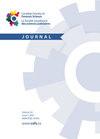{"title":"表型和生物地理祖先推断的多重预测工具方法","authors":"C. Frégeau","doi":"10.1080/00085030.2021.2016206","DOIUrl":null,"url":null,"abstract":"Abstract Phenotypic and biogeographical ancestry predictions for 128 Canadians with various self-reported ancestries, generated using the ForenSeq™ DNA Signature Prep kit/Primer Mix B and VEROGEN’s Universal Analysis Software (UAS) v1.3, were compared to predictions derived from the ERASMUS v2.0, Snipper Application v2.5, Forensic Reference/Resource on Genetics knowledge base [FROG-kb] ©2019 and STRUCTURE v2.3.4, web tools. Performance metrics were calculated for all tools tested. The UAS v1.3 eye color predictions were determined to be accurate (91.8% for brown, 82.4% for blue) with no need to complement results with any other predictive tools. For hair color predictions, the UAS v1.3 was accurate for black (93.5%), for red (80.0%) but limited for brown (50.0%) and for blond (31.3%) using the Highest Probability Approach. The ERASMUS web tool could complement the UAS results using a revised Prediction Guide Approach. Non-admixed individuals with ancestries from Africa, East Asia or Europe were predicted with 79.7% accuracy using the UAS v1.3. Admixed individuals and those with ancestries from India, the Middle East and South America were better classified using Snipper, FROG-kb and STRUCTURE. Complementing UAS v1.3 predictions with those obtained from open access web tools thus represents a way to maximize information derivable from unknown samples.","PeriodicalId":44383,"journal":{"name":"Canadian Society of Forensic Science Journal","volume":"55 1","pages":"71 - 99"},"PeriodicalIF":0.2000,"publicationDate":"2021-12-29","publicationTypes":"Journal Article","fieldsOfStudy":null,"isOpenAccess":false,"openAccessPdf":"","citationCount":"0","resultStr":"{\"title\":\"A multiple predictive tool approach for phenotypic and biogeographical ancestry inferences\",\"authors\":\"C. Frégeau\",\"doi\":\"10.1080/00085030.2021.2016206\",\"DOIUrl\":null,\"url\":null,\"abstract\":\"Abstract Phenotypic and biogeographical ancestry predictions for 128 Canadians with various self-reported ancestries, generated using the ForenSeq™ DNA Signature Prep kit/Primer Mix B and VEROGEN’s Universal Analysis Software (UAS) v1.3, were compared to predictions derived from the ERASMUS v2.0, Snipper Application v2.5, Forensic Reference/Resource on Genetics knowledge base [FROG-kb] ©2019 and STRUCTURE v2.3.4, web tools. Performance metrics were calculated for all tools tested. The UAS v1.3 eye color predictions were determined to be accurate (91.8% for brown, 82.4% for blue) with no need to complement results with any other predictive tools. For hair color predictions, the UAS v1.3 was accurate for black (93.5%), for red (80.0%) but limited for brown (50.0%) and for blond (31.3%) using the Highest Probability Approach. The ERASMUS web tool could complement the UAS results using a revised Prediction Guide Approach. Non-admixed individuals with ancestries from Africa, East Asia or Europe were predicted with 79.7% accuracy using the UAS v1.3. Admixed individuals and those with ancestries from India, the Middle East and South America were better classified using Snipper, FROG-kb and STRUCTURE. Complementing UAS v1.3 predictions with those obtained from open access web tools thus represents a way to maximize information derivable from unknown samples.\",\"PeriodicalId\":44383,\"journal\":{\"name\":\"Canadian Society of Forensic Science Journal\",\"volume\":\"55 1\",\"pages\":\"71 - 99\"},\"PeriodicalIF\":0.2000,\"publicationDate\":\"2021-12-29\",\"publicationTypes\":\"Journal Article\",\"fieldsOfStudy\":null,\"isOpenAccess\":false,\"openAccessPdf\":\"\",\"citationCount\":\"0\",\"resultStr\":null,\"platform\":\"Semanticscholar\",\"paperid\":null,\"PeriodicalName\":\"Canadian Society of Forensic Science Journal\",\"FirstCategoryId\":\"1085\",\"ListUrlMain\":\"https://doi.org/10.1080/00085030.2021.2016206\",\"RegionNum\":0,\"RegionCategory\":null,\"ArticlePicture\":[],\"TitleCN\":null,\"AbstractTextCN\":null,\"PMCID\":null,\"EPubDate\":\"\",\"PubModel\":\"\",\"JCR\":\"Q4\",\"JCRName\":\"MEDICINE, LEGAL\",\"Score\":null,\"Total\":0}","platform":"Semanticscholar","paperid":null,"PeriodicalName":"Canadian Society of Forensic Science Journal","FirstCategoryId":"1085","ListUrlMain":"https://doi.org/10.1080/00085030.2021.2016206","RegionNum":0,"RegionCategory":null,"ArticlePicture":[],"TitleCN":null,"AbstractTextCN":null,"PMCID":null,"EPubDate":"","PubModel":"","JCR":"Q4","JCRName":"MEDICINE, LEGAL","Score":null,"Total":0}
引用次数: 0
A multiple predictive tool approach for phenotypic and biogeographical ancestry inferences
Abstract Phenotypic and biogeographical ancestry predictions for 128 Canadians with various self-reported ancestries, generated using the ForenSeq™ DNA Signature Prep kit/Primer Mix B and VEROGEN’s Universal Analysis Software (UAS) v1.3, were compared to predictions derived from the ERASMUS v2.0, Snipper Application v2.5, Forensic Reference/Resource on Genetics knowledge base [FROG-kb] ©2019 and STRUCTURE v2.3.4, web tools. Performance metrics were calculated for all tools tested. The UAS v1.3 eye color predictions were determined to be accurate (91.8% for brown, 82.4% for blue) with no need to complement results with any other predictive tools. For hair color predictions, the UAS v1.3 was accurate for black (93.5%), for red (80.0%) but limited for brown (50.0%) and for blond (31.3%) using the Highest Probability Approach. The ERASMUS web tool could complement the UAS results using a revised Prediction Guide Approach. Non-admixed individuals with ancestries from Africa, East Asia or Europe were predicted with 79.7% accuracy using the UAS v1.3. Admixed individuals and those with ancestries from India, the Middle East and South America were better classified using Snipper, FROG-kb and STRUCTURE. Complementing UAS v1.3 predictions with those obtained from open access web tools thus represents a way to maximize information derivable from unknown samples.


